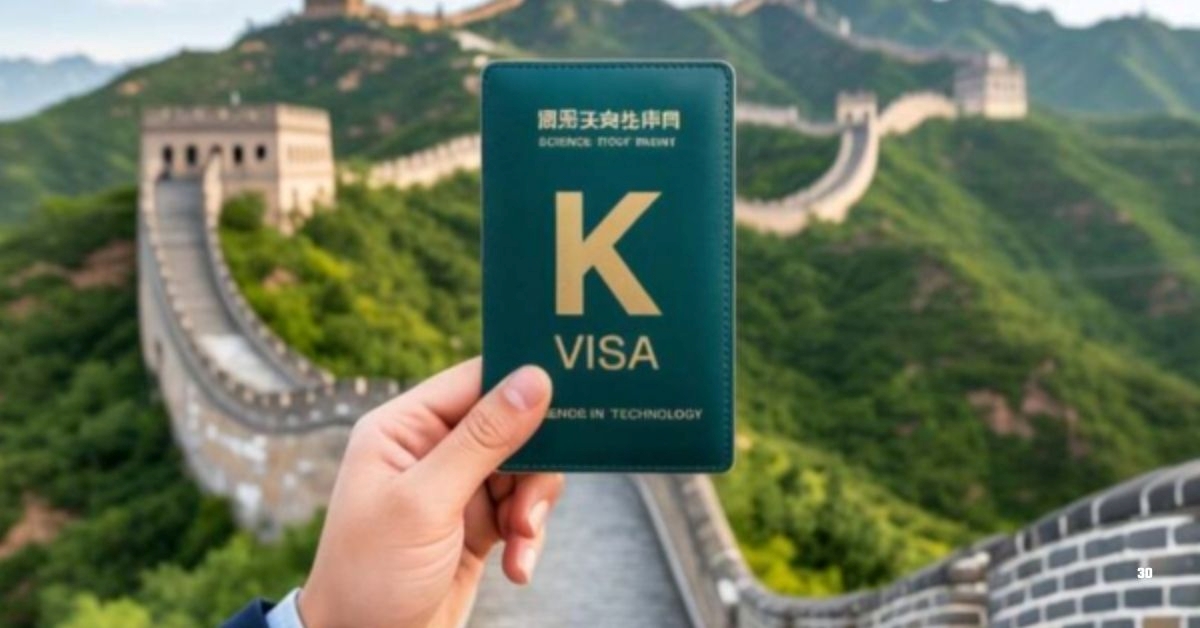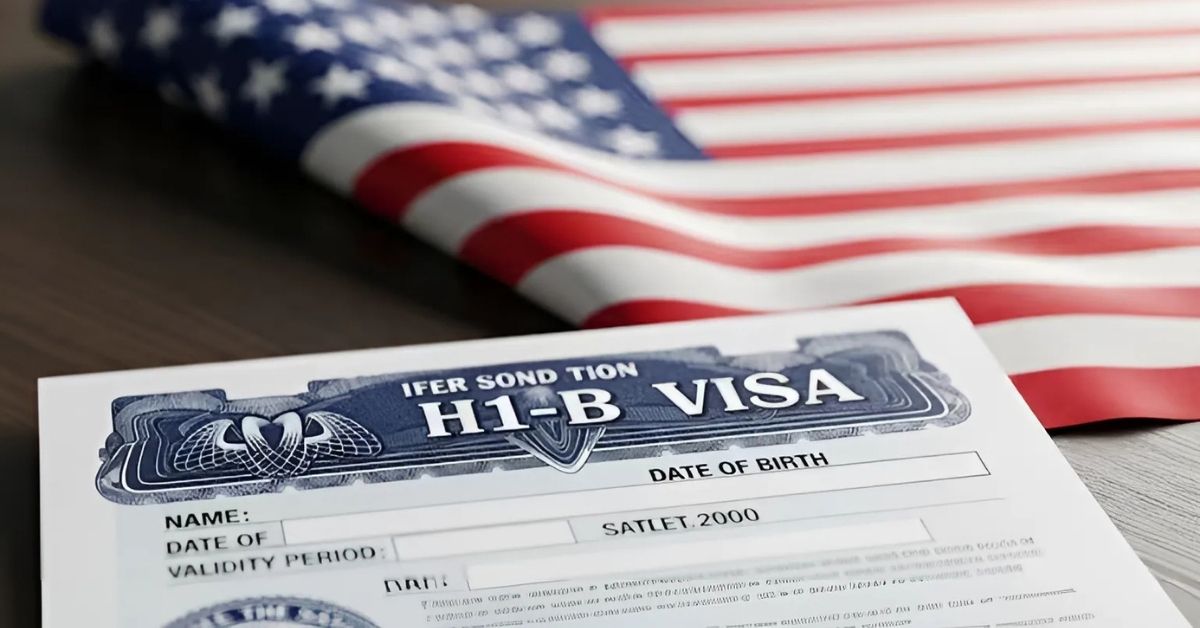China and the United States have introduced visa programs to attract skilled foreign workers. China’s new K visa, starting October 1, 2025, is designed for young professionals in science and technology. It allows multiple entries and longer stays and does not require a local sponsor. K visa holders can take part in education, research, and business activities.
The U.S. H-1B visa is a long-standing program for skilled workers in fields like IT, engineering, and healthcare. It lets U.S. companies hire foreign talent for speciality jobs. However, recent changes have made it harder to access. President Trump has announced a $100,000 fee for new H-1B applications, causing concern among Indian professionals and tech companies.
In this article, we’ll take a look at how the two visas compare. We’ll explore their benefits, challenges, and what these changes mean for global talent looking to work abroad.
Also Read| What is the Difference Between B1 and B2 Visa for the US? (Explained)
Difference between China's K Visa vs. US H-1B Visa
While both are visas aimed at attracting foreign talent, China's K visa and the US H-1B visa have significant differences in their purpose, requirements, and process. China's K visa is a new programme designed to attract young science and technology professionals, while the US H-1B visa is a long-standing programme for workers in "speciality occupations".
| Feature | China's K Visa | US’s H-1B Visa |
| Primary Purpose | To attract young science, technology, engineering, and mathematics (STEM) talent, including researchers and entrepreneurs. | To employ foreign workers in "speciality occupations" that require theoretical and practical knowledge. This can include STEM but also other fields like business and finance. |
| Sponsorship Requirement | No sponsoring employer or host institution is required for the application. This makes the visa process more flexible for individuals. | Employer-sponsored. An employer in the U.S. must file a petition on behalf of the prospective employee. |
| Eligibility | Primarily for young professionals with a bachelor's degree or higher in STEM fields from recognised universities. Also open to those in teaching or research at such institutions. | Requires a bachelor's degree (or its equivalent) in a field directly related to the speciality occupation. Experience can sometimes substitute for a degree. |
| Application Process | Intended to be streamlined and less bureaucratic. The application is based on the individual's qualifications. | A complex process that involves filing a Labour Condition Application (LCA) with the Department of Labour, followed by a petition (Form I-129) to U.S. Citizenship and Immigration Services (USCIS). |
| Annual Cap | There is no stated annual cap. | Subject to an annual numerical cap of 85,000 visas (65,000 for the regular cap and 20,000 for those with a U.S. master's degree or higher). A lottery system is used when demand exceeds the cap. |
| Activities Allowed | Allows for multiple entries, longer stays, and a broader range of activities, including academic exchanges, research, entrepreneurship, and business activities. | A temporary work visa that ties the worker to the sponsoring employer and the specific job for which the visa was issued. It has a "dual intent" provision, meaning the visa holder can pursue permanent residency. |
| Cost | The cost is expected to be significantly less than the H-1B visa, especially after the recent fee increase. | The fees can be substantial, especially with the recent increase to a $100,000 fee for certain new petitions, in addition to other regular fees. |
What is China’s K Visa?

China's K visa is a new visa category introduced by China, effective October 1, 2025, specifically designed to attract young foreign professionals in Science, Technology, Engineering, and Mathematics (STEM) fields. It's often seen as China's answer to the US H-1B visa, with key features aimed at making it more attractive for global talent. Here are the key aspects of China's K Visa:
- Target Audience: Young scientific and technological talents, including graduates with a bachelor's degree or higher in STEM fields from recognised universities or research institutions and young professionals engaged in teaching or research in these fields.
- No Employer Sponsorship: Unlike many other work visas, including the H-1B, the K visa generally does not require a domestic employer or entity to issue an invitation, making the application process less restrictive for individuals.
- Flexibility and Scope of Activities: K visa holders can expect greater flexibility regarding:
- Multiple entries: Allowing for easier travel in and out of China.
- Longer validity and duration of stay: Providing more stability for professionals.
- Broader activities: Permitting engagement in academic exchanges, research, cultural activities, entrepreneurship, and business ventures.
- Streamlined Application: The application process is expected to be more streamlined compared to other visa types, with the aim of facilitating easier entry for foreign talent.
- Strategic Initiative: The K visa is part of China's broader "Talent Power Strategy" to bolster its innovation drive and attract high-calibre young professionals to contribute to its scientific and technological advancement.
This visa is a significant move by China to compete for global STEM talent, especially amidst tightening immigration policies and rising costs in some Western nations.
For You| List of Visa Free Countries for Indian Passport Holders in 2025; Check Names Here
What is the US’s H-1B Visa?

The H-1B visa is a non-immigrant visa that allows U.S. employers to temporarily employ foreign workers in speciality occupations. These are jobs that generally require a bachelor's degree or its equivalent in a specific field. Here are the key aspects of the H-1B visa:
- Sponsorship is Required: The visa is employer-sponsored. This means a U.S. employer must file a petition with U.S. Citizenship and Immigration Services (USCIS) on behalf of the prospective employee. You can't apply for an H-1B visa on your own.
- Speciality Occupation: The job must be in a "speciality occupation". This includes fields like IT, engineering, medicine, finance, and other professions that demand a high level of specialised knowledge.
- Educational Requirement: To qualify, the foreign worker must have at least a bachelor's degree or its equivalent, or possess a licence in a speciality occupation field, or have experience that is equivalent to a bachelor's degree.
- Annual Cap and Lottery: There is an annual numerical cap on the number of H-1B visas issued. The current cap is 65,000 for the regular category and an additional 20,000 for those with a U.S. master's degree or higher. Because demand often exceeds the supply, USCIS uses a lottery system to select petitions.
- Dual Intent: One of the key features of the H-1B visa is its "dual intent" provision. This means that a visa holder can legally seek permanent residency (a green card) in the U.S. while on the H-1B visa without being seen as violating the terms of their temporary visa.
- Duration and Renewal: The initial H-1B visa is typically granted for up to three years and can be extended for a total of six years. In some cases, extensions beyond six years are possible, particularly if the employee has a pending green card application.
Comments
All Comments (0)
Join the conversation